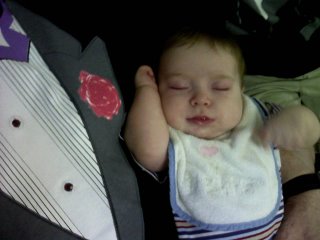In the next year, Bill Gates will manage one of the highest-profile transitions in American business history — he’ll leave his day job as chairman at Microsoft, the $300 billion company he co-founded 32 years ago, and will move full time into philanthropy.
But before he leaves, Gates has a few more high-tech projects to finish. Until this morning, one project — almost five years in the making and code-named 'Milan,’ — was top-secret.
In a TODAY exclusive, I had a chance to talk with Gates at Microsoft’s Redmond, Wash., campus about a revolutionary new device Microsoft now calls “Surface.” (MSNBC.com is a Microsoft-NBC Universal joint venture.)
“Pretty exciting, eh?” Gates said with a sly smile, when he put his hand down on what looked initially like a low, black coffee table: At the touch of his hand, the hard, plastic tabletop suddenly dissolved into what looked like tiny ripples of water. The ‘water’ responded to each of his fingers and the ripples rushed quickly away in every direction.
“Go ahead,” he said. “Try it.” When I placed my hand on the table at the same time, there were more ripples.
It took a moment to appreciate what was happening. Every hand motion Gates or I did was met with an immediate response from the table. There was no keyboard. There was no mouse. Just our gestures.
“All you have to do is reach out and touch the Surface,” Gates told me with barely concealed pride. “And it responds to what you do.”
In an industry whose bold pronouncements about the future have taught me the benefits of skepticism, Surface took my breath away. If the Surface project rollout goes as planned in November, it could alter the way everyday Americans control the technology that currently overwhelms many of us.
After Gates and I spent about 20 minutes taking the device out for a spin, a lot of my preconceived notions about how people interact with computers began to melt away.
How it works
The radical new approach starts with the guts of the device itself. Under the impact-resistant plastic top skin on an otherwise nondescript table hide five infrared scanners, a projector and a wireless modem. The scanners recognize objects and shapes placed on the top and respond to them accordingly. For example, if the scanners recognize fingers, and the fingers have been placed in color circles that appear on the surface, the projector shows colored lines that follow the tracings and movements of your fingers. Meanwhile, an internal modem sends and receives signals from any electronic device placed on it. All of the hardware is run by a special version of Microsoft’s new operating system, Windows Vista.
To do things on Surface’s tabletop screen, you reach down, touch it and push it. To make the image you see on the screen bigger, spread your fingers. To make it smaller, squeeze your fingers together. To move something into the trash, push it into the trash with your hand. And it allows what Microsoft calls “Multi-Touch” and “Multi-User” interaction — namely, more than one person can interact with it at a time. Try that with your home computer.
One of the most revolutionary aspects of Surface, though, is its natural interaction with everyday objects and technologies. When you place your Wi-Fi-enabled digital camera on the table, for example, Surface "sees" the camera and does something extraordinary: It pulls your digital pictures and videos out onto the table for you to look at, move, edit or send. Images literally spill out in a pool of color.
The whole thing is remarkably intuitive, says Gates, because it’s remarkably similar to what people do in everyday life. “When you make it so that it's just visual — touch and visual — you're drawing on what humans are incredibly good at,” he said. “You know, what people have been practicing their entire lives. People will start to see that this world of information and entertainment is going to be far more accessible."
NBC News video |
Microsoft unveils a new product May 30: Bill Gates gave TODAY's Paul Hochman an exclusive look at Surface, a table-shaped computer that responds to touch. Today show |
The first place you’ll probably see Microsoft Surface is at one of its four inaugural retail partners, including T-Mobile USA, Starwood Hotels and Resorts, and Harrah’s Entertainment. At T-Mobile, for example, you will be able to place any of their phones on Surface. Surface will sense the presence of each individual phone and then project each phone’s features in front of you for you to consider. If you want to add a feature in the store, just “push” that feature “into” your phone with your finger.
Want to compare three phones? Four? Put them all on the table, and their respective features will line up next to one another, for your consideration.
It’s safe to say computing will not look the same again.
Learn more about Surface at microsoft.com/surface.
Paul Hochman is the gear and technology editor for NBC's TODAY show and Gear Guy for Men's Journal Magazine. To learn more about Paul you can visit his website at: www.seriousfun.tv




























